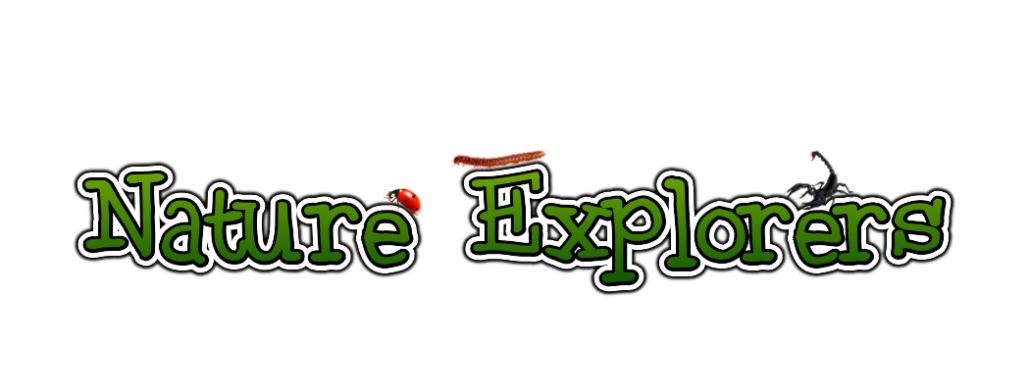Crafts and Experimenting with Nature
Rock Painting (Elementary Age)
Rock painting is one of the oldest forms of art in the world. People would use rock painting as a way to tell stories and record their history. Today rock painting is used for art and decoration!
Be careful where you get your rocks though! Getting rocks from State and National parks or railways is not allowed. Get your rocks from your backyard (with your parent’s permission) or see if you can find a nice rock at your local public park or a store. 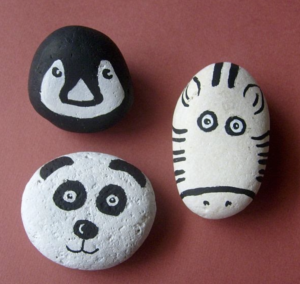
Once you find your rock, wash it with warm soapy water and let it dry in the sun. While you wait, you can get everything ready. Lay out an old towel or some paper to paint on. You will need some kid-safe paint and paint brushes if you would like. Acrylic, tempera, or paint pens are usually the best to use. Once your rock is dry, you can paint it however you please! Maybe paint your favorite bug or animal. There is no limit to what you can paint!
Once you are done, let your rock dry outside and use a sealant (a spray or ModPodge) if you have one. Your rock can be used as a paper weight, door stop, or as decoration.
Inspiration: https://www.pinterest.com/linn5951/rock-painting/
If you need supplies: https://www.michaels.com/trending-crafts/rock-painting/941330906
Fun Science Experiments (Middle School Age)
You don’t need to be in school to think science is cool and to do cool experiments! All of these experiments can be done at home with common household items, but please get your guardian’s permission first!
Egg Shell Chalk
Did you know that chalk is made of calcium, the same thing found in eggs? Egg shell chalk is relatively easy to make and fun to use! You will need 10 egg shells, 2 tsp. of plain flour, 4 tsp. hot water, food dye, and paper towels. Clean the shells, remove the membrane, and grind them into a fine powder. Add the egg powder and flour into a bowl and add enough water to make a thick paste. Add any color you would like, then roll the paste into a paper towel to form whatever shape you would like. Leave the chalk to dry for a few days and then it will be ready to use! The chalk works best outside on the sidewalk.
For more detailed instructions, please visit https://www.kidspot.com.au/things-to-do/activity-articles/how-to-make-your-own-eggshell-chalk/news-story/041ab8334eebedbaebcd6a52a9d5fe63.
Naked Egg
Speaking of eggs, did you know that you can dissolve the shell off of eggs? All you need are eggs, vinegar, food coloring, and various different liquids if you want to experiment 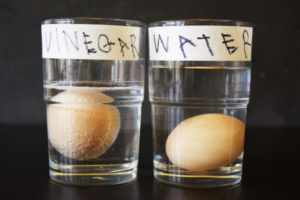 further. Put the eggs into their own cups with enough vinegar to cover the egg. Leave the egg in vinegar for at least 24 hours and see if the egg shell has completely dissolved
further. Put the eggs into their own cups with enough vinegar to cover the egg. Leave the egg in vinegar for at least 24 hours and see if the egg shell has completely dissolved
away. Once the egg is “naked” you can put it into different liquids to test osmosis, or the movement of water across a membrane. The egg can plump up or shrivel up depending on what you put the egg in.
For more detailed instructions, please visit https://www.sciencekiddo.com/eggsperiment/.
Elephant Toothpaste
For this experiment you will need more materials, but also a warning: this experiment can get messy so please do it outside and with permission! You will need a 16 oz plastic bottle, ½ cup 20 volume hydrogen peroxide, 1 tbsp. of dry yeast, 3 tbsp. of warm water, liquid dish soap, small cup, tray, safety goggles, and food coloring. Ass hydrogen 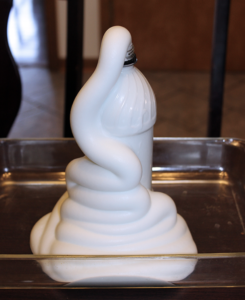 peroxide into the bottle and add food coloring and dish soap. Combine the yeast and warm water in a separate cup and add that mixture to the hydrogen peroxide. The mixture will foam up and spill out of the bottle, but it can spray out depending on the force of the reaction. So be careful!
peroxide into the bottle and add food coloring and dish soap. Combine the yeast and warm water in a separate cup and add that mixture to the hydrogen peroxide. The mixture will foam up and spill out of the bottle, but it can spray out depending on the force of the reaction. So be careful!
For more detailed instructions, please visit https://www.scholastic.com/parents/kids-activities-and-printables/activities-for-kids/math-and-science-ideas/home-science-experiments-elephants-toothpaste.html.
For more cool experiments, check out https://www.sciencefun.org.
Habitat Protection Experiment (High School Age)
The human population is expected to grow to over 8 billion people by 2025 but as the human population grows, we require more land to help support our agriculture, housing, 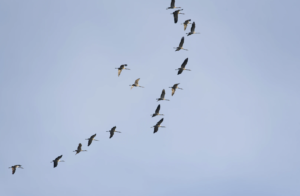 and industries. As the human population expands, we need to be careful to leave some habitat protected for wildlife, especially migratory birds. Migratory birds have two habitat ranges: one for summer and one for winter. They also have many stops along their migration route that need to be protected as well. We can use services like Google Earth to determine which habitats need to be protected in order to protect specific birds. For this activity, you will need a computer, internet access, a spreadsheet program like Excel or Google Sheets, and the free version of Google Earth (if you have permission to download it).
and industries. As the human population expands, we need to be careful to leave some habitat protected for wildlife, especially migratory birds. Migratory birds have two habitat ranges: one for summer and one for winter. They also have many stops along their migration route that need to be protected as well. We can use services like Google Earth to determine which habitats need to be protected in order to protect specific birds. For this activity, you will need a computer, internet access, a spreadsheet program like Excel or Google Sheets, and the free version of Google Earth (if you have permission to download it).
You will use available information online to map the migration paths of birds and see what habitats they pass over and which habitats are best suitable for birds to stop in. For more detailed instructions on how to complete this activity, please visit https://www.sciencebuddies.org/science-fair-projects/project-ideas/EnvSci_p057/environmental-science/saving-migratory-animals#summary.

